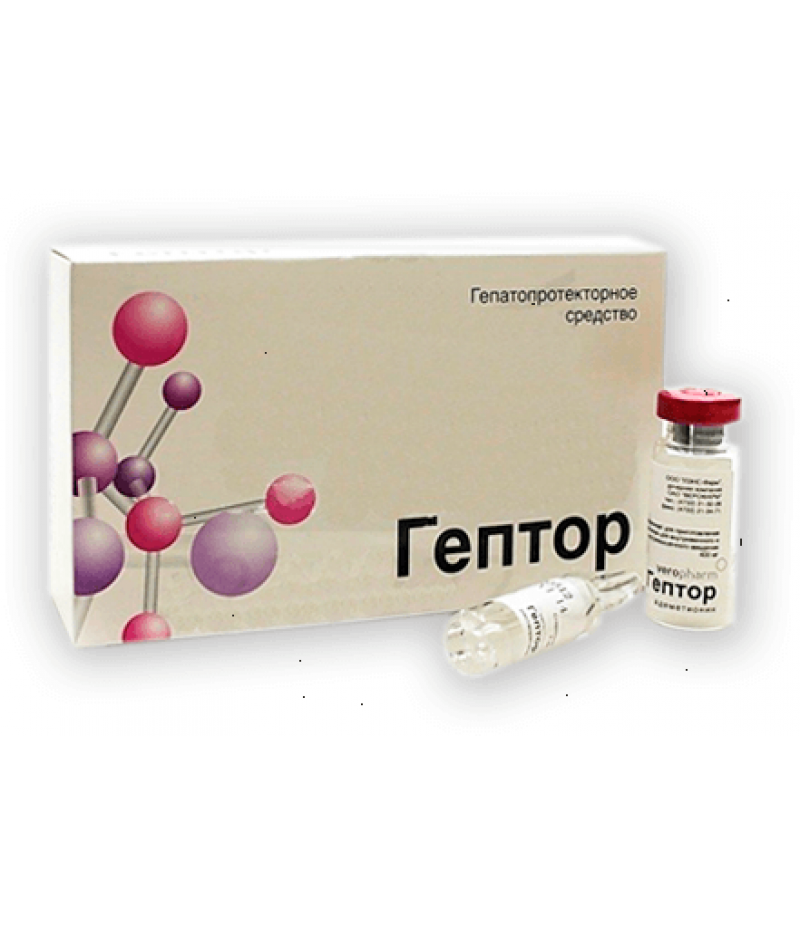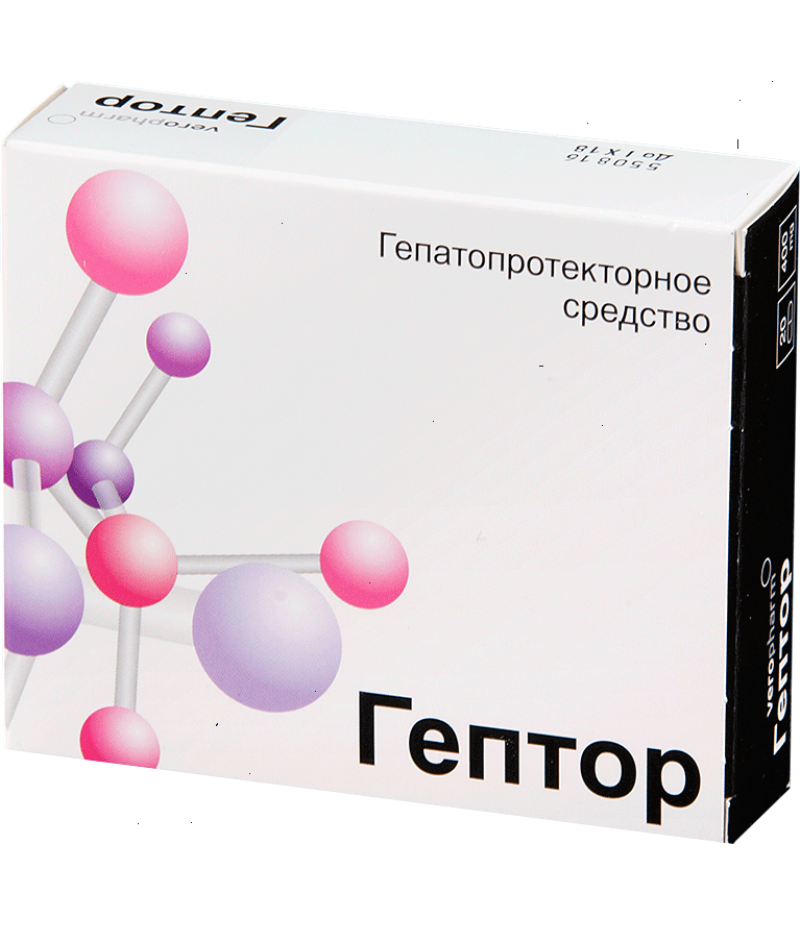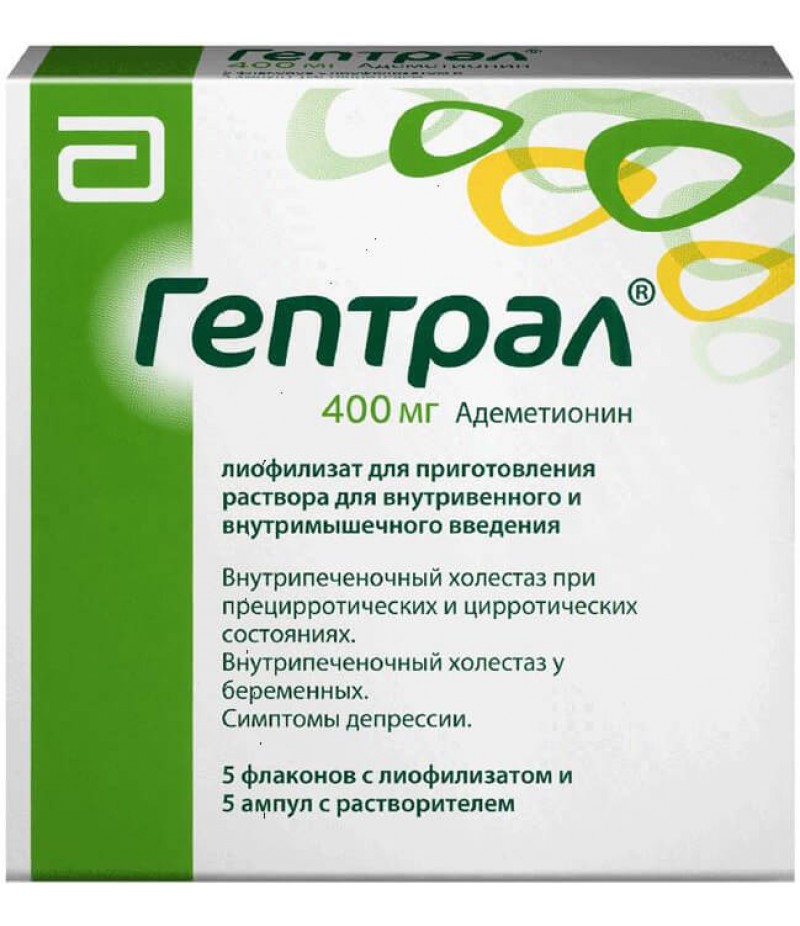Heptor powder for injection 400mg #5
- $38.86
- 3 or more $38.30
- Availability:In Stock
Heptor for ijection user manualYou can buy Heptor for ijection hereWhen eliminating diseases that cause biliary stagnation, the heptor drug is used. The agent refers to hepatoprotectors and is additio
Tags: powder
Heptor for ijection user manual
You can buy Heptor for ijection here
When eliminating diseases that cause biliary stagnation, the heptor drug is used. The agent refers to hepatoprotectors and is additionally characterized by antidepressant activity. This hepatoprotector contributes to an increase in the intensity of bile outflow, improving the work of organs, reduces the level of damage to the liver cells as a result of chronic diseases. What are the features of injecting with the drug, what indications and contraindications exist, we will consider in this manual.
Form release and active ingredient
Along with convex tablets having a shell, a lyophilizate is produced, which is intended for preparation of the solution. It is injected into the vein or intramuscularly. The package includes:
Powder lyophilizate - weight of white or white-yellow species. It does not have auxiliary components and is packed in vials. In each of them there is an active component - ademetionin in the amount of 400 mg (or 760 mg of 1,4-butane disulfonate ademethionine).
Solvent of a transparent type, having shades from yellow to colorless, with a special smell. 1 ml of this liquid contains 68.48 mg of L-lysine in the form of monohydrate. In addition, the composition contains sodium hydroxide in the solution - up to pH 9.8-10.3 and liquid for injections.
5 bottles with the main component and 5 ampoules containing a solvent of 5 ml are packed in a cardboard packaging package. To prepare the liquid for injection, it is necessary to mix the components. The resulting liquid will be clear, with a light yellow color or colorless. Visible sediment is absent.
Ademethionine, which is an active component in the composition of Heptor, participates in a number of biochemically active processes occurring in the body. At the same time, production of ademetionine of endogenous type is activated. This component is present in tissues and fluids of a biological species. In addition, it precedes a variety of polyamines. Promotes the presence of putrescine, which activates regenerative processes in cells, promotes the proliferation of hepatocytes.
Pharmacokinetic features
Enter the heptor intravenously or into the muscle. If the bioavailability parameter for oral administration of tablets is 5%, then with intramuscular injection, this figure reaches 95%. The penetration of the active component occurs through the BBB. When injection pricks in the muscle or vein, as well as during the taking of tablets, there is a significant increase in ademetionine saturation of spinal fluid type. Biotransformation processes occur in the liver, and the withdrawal is carried out through the work of the kidneys with a half-life of up to 1.5 hours.
Therapeutic effect of the drug
Ademethionine, which is part of Heptor, provides a variety of therapeutic effects from the use of this drug. Since the greatest natural content of this substance is observed in the brain and liver, it is these organs that are responsible for the main effect of the drug.
Thanks to the hepatoprotective effect, the resistance of the liver cells to the effect of various negative factors is increasing. Cells increase their strength relative to damage. The activity of this organ is growing. At the same time, there is an activation of the formation and multiplication of cells, the replacement of emerging elements of the dead. This effect is based on a preventive effect on cirrhosis or liver fibrosis against a background of chronic diseases.
Choleretic and cholekinetic nature of the effect is based on stimulating the formation of bile and increasing the intensity of its outflow. Elimination of the effect of stagnation of bile increases the efficiency of the liver without expanding its ducts. Simultaneously, taking the drug ensures the prevention of inflammation in this organ. A more active outflow provides a fight against cholestasis and prolongs the period of remission in patients with cholecystitis.
Injection administration of the agent reduces the production and detoxification of harmful substances that are generated by organs and tissues or enter the body from the external environment. The detoxification effect promotes active detoxification of toxins by the liver. At the same time, the antioxidant effect is also known, due to which the cells more tolerably tolerate the negative influence of free radicals.
The role of the heptor as a neuroprotectic is associated with the strengthening of brain cells and fibers of nerve cells. In the case of severe intoxication reactions, the probability of occurrence and growth of manifestations of encephalopathy is minimized. At the same time, the intensity of reproduction and renewal of NA cells increases, which has a positive effect in the fight against fibrosis and sclerosis.
The use of the drug contributes to the relief of depression and the counteraction of their relapses. Antidepressant effects bring the maximum benefit after the end of the 14-day treatment period, although by the end of the first seven-day period one can begin to feel a positive effect.
Indications for use
Heptor injections are used in the treatment of ailments accompanied by biliary stasis:
fatty degeneration of this organ;
hepatitis of different origin, including due to the action of viruses, toxic reaction, drug origin, and also chronic type;
liver damage with alcoholic beverages or medicamentous components;
cholecystitis of chronic type, not accompanied by the formation of stones;
cholangitis;
cirrhosis of the liver;
encephalopathy, incl. and due to hepatic insufficiency.
Important! Prescribe the drug also in the treatment of depressive syndrome, as well as in the case of active withdrawal syndrome of alcoholic origin.
Contraindications
Categorically prohibited taking the drug to a number of patient categories:
under the age of 18;
pregnant women in the I-II trimester;
with intolerance of components that are constituent elements of this medication.
Important! For women during lactation, the possibility of receiving a remedy is considered from the perspective of correlating the benefits to the patient and the dangers to the future child.
How to apply Heptor injection
When a person is prescribed a preparation of Heptor, the injection should be carried out according to the instructions for use. It is necessary to follow the rules of preparation of the liquid for the introduction and the procedure for its introduction into the muscle or vein.
Procedure of drug administration
In a pack with Heptor contain vials, inside which is lyophilizate, as well as the corresponding number of ampoules with a liquid of dissolving action. The latter component is recommended to be used in the process of giving the drug the form necessary for effective administration without a risk to health in the vein or intramuscularly.
Usually, with liver ailments and its pathological changes intramuscularly or in a vein, 400-800 mg daily should be administered. This corresponds to 1-2 vials of the active substance. The course of treatment is two weeks every day. If there is a need to continue treatment, then after injections go to the use of tablets at 800-1600 mg daily. The duration of the subsequent oral intake is no more than 4 weeks.
To eliminate depressive syndromes, injections with a total volume of 400-800 mg per day are required. The duration of the treatment period is 2-3 weeks. After the course of medication through a vein or into a muscle, if necessary, use another treatment regimen - taking in tablet form 800-1600 mg daily. The course will be 14-28 days.
How to prepare the solution for introduction
The introduction of the drug into the vein is considered to be the preferred treatment option, compared with the use of intramuscular nature. This fact is due to the reduced risks of complications of different types. Dilute the remedy in a very short period of time before using the solution. You can not keep the diluted product, so unused residues should be disposed of as soon as possible. It is inadmissible to mix Heptor with solutions in the structure of which calcium ions are present. However, compatibility with other formulations intended for infusion, for example, with glucose and saline solution, is noted.
During the preparation, first a liquid-solvent is drawn into the syringe, and then it is introduced into the vial with lyophilizate. Do this carefully, to prevent the dispersion of particles of matter on the walls of the container. To maximize the dissolution, a vigorous shaking of the vial is required.
After dissolving the lyophilizate, a solution should be obtained with no impurities present. There should be no undissolved particles. The color of the solution is white or white-yellow. Deviations from these parameters indicate the inadmissibility of the drug.
Features of intravenous infusion
The solution of the heptor is injected vein struino or by infusion. In the first version of manipulation, the drug is injected into the vein in a manner similar to intramuscular injection. In the second case, the process will be slower, more drip. Therefore, the solution is mixed with saline in a volume of 250-500 ml.
If the injection is jet, then the drug is typed into a syringe. It is advisable to choose only a thin needle of intravenous action. When the syringe is positioned vertically, air bubbles are removed from it. Then the place where the needle enters is wiped off with an antiseptic. The needle penetrates into the vein, and the solution is slowly added, within 2-3 minutes, to its intended purpose. After the end of the procedure, the site of the injection is wiped with an antiseptic.
When infusing intravenously, the agent is diluted with a liquid-solvent. Then it is poured into a solution intended for infusion (saline or 5% glucose) in the proportion of 1 fl. Heptor for 250 ml of liquid. After the connection to the system, the injection rate should be 15-25 cap / min.
Introduction by intramuscular route
After diluting the drug, the solution is drawn into a syringe with a sufficiently long needle. Choose a thick needle design, focused on intramuscular administration. Then you should let the air out of the liquid. The site of the injection is treated with an antiseptic. Enter the preparation Heptor intramuscularly desirable in the lateral third of the top of the thigh or the upper third of the shoulder of the outer arrangement. When injected into the buttock, there is a risk of subcutaneous injection.
The needle should be inserted deeper into the tissue - vertically to the place on the surface. After removing the needle, the place is treated with an antiseptic. Since the course of treatment is long, then every subsequent injection should depart from the previously used place by 1 cm Otherwise, it may form bruises and abscesses.
Overdose and side effects
Information on the detected overdoses of this drug was not found. In general, there is a good tolerance of patients, but with the injection method of administration, some side effects are possible:
heartburn;
gastralgic reaction;
manifestations of an allergic nature;
manifestations of dyspepsia.
Possible negative processes on the surface of the skin (rash or itching), reaction of the NA (dizziness, headaches, lack of sleep). There were cases of venous phlebitis of superficial location, hot flashes, as well as muscle spasms. Negative effect is possible on the GI tract - nausea, vomiting, colic, dry mouth, flatulence, etc.
Specific requirements for use
There are situations that require careful use of the drug in short-term and long-term therapy. The introduction of the drug intramuscularly or into a vein is performed only with the agreement with the doctor and by his decision.
Special cases
People over 65 years are well tolerated drug, so the standard dosage is not reduced. At the same time it is recommended to use the minimum dosage level in the initial days of admission with a gradual release to the norm.
When taking Heptor, you may experience a feeling of anxiety, which can be removed by changing the dosage. Do not delay taking medicine. Due to the effect of toning up influence, it is not advisable to make injections on the eve of sleep.
When a patient is diagnosed with cirrhosis of the liver, during the treatment with Heptor it is necessary to control the composition of the blood and to monitor the nitrogen parameters of the residual type in it. It is also important to know the indices of the presence of urea in the blood, as well as of creatinine. The lack of B vitamins together with the limited intake of folic acid adversely affects the absorption of the drug. With a shortage of these components, it is advisable to introduce these components into the therapeutic course.
Important! In bipolar disorder, treatment with ademetionine can lead to an inversion of affect.
Assignment to children
The drug is not prescribed for children under 18 years.
Treatment during pregnancy
Take the drug during the first two trimesters of pregnancy time is strictly prohibited. Appointment in the third trimester is possible, however, only by a doctor's decision and with regular monitoring of the condition of the mother and fetus.
During the period of breastfeeding, the use of a medical device is permitted when agreed with a physician. At the same time, the possibility of suspending breastfeeding is considered, and the risks to the health of both the mother and the child are assessed.
Interaction with other means
No reliable information on the interaction with other medicinal substances has been identified. However, it is advisable to refrain from sharing the tricyclic type with antidepressants. It is not advisable to include heptor in therapy if the patient is already taking selective serotonin reuptake inhibitors, as well as medicines containing tryptophan.
Means with an effect analogous to Heptor are Ademethionin-Vial, Heptor H, Heptral. Keep the ampoules in a dry and dark place. The temperature is not more than 25 degrees Celsius. Shelf life is 2 years, and the solvent is 3 years.



